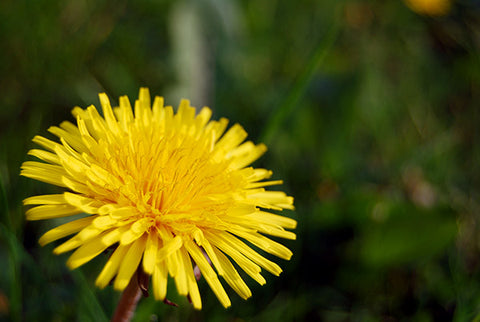Yes. Even pesky perennial weeds can be composted in a HOTBIN. Here are the precautions and considerations to take into account.
What Is a Weed?
Technically a weed can be anything growing in the 'wrong place'. Do bear in mind though that what one person thinks is a weed can be a precious flower to another.
Weeds that we don’t want can be characterised as such because they are pinching space, light and food from those plants we want to keep. A familiar site in domestic gardens, they often appear in beds and in-between flagstones; they are even more of an issue on allotments.
Types of Weeds

Weeds can be annual, biennial or perennial. The latter being the most problematic from dandelion, buttercup, nettles, docks, and thistles to invasive types such as couch grass, bindweed/convolvulus, horsetail, and ground elder.
Notes on Horsetail
Horsetail or Mare’s Tail (Equisetum Arvense) is an invasive, deep-rooted perennial weed which forms dense carpets of foliage forcing out less vigorous plants in beds and borders.
Easily recognised by its upright, fir tree-like shoots that appear in summer, Horsetail has light brown stems in the Spring which appear with a cone-like spore producing structure. In summer, sterile green shoots develop into fir tree-like plants.
Horsetail is an invasive and tough weed where rhizomes bury deep below the surface allowing them to enter other gardens beneath the surface. So, if you are planning to compost this plant you need to check that the seeds/bits are only added to the top of an already hot pile (above 40°c). DO NOT fork in or turn the contents of the HOTBIN as seeds will fall down to cooler base.
Composting Weeds – The Importance of Destroying Seeds and Rhizomes
As far as composting goes, weeds aren’t any more difficult to compost than other plants so they shouldn’t be wasted. If you are following general weed advice and removing them whilst they are young, the weeds will breakdown and make excellent compost quickly.
The main complication surrounding composting weeds is to do with the seeds and the rhizomes, both of which can cause chaos if not destroyed effectively.
Seeds
Proving to be problematic seeds can survive in soil and cold compost heaps lying dormant for many years. This can include seeds from melons and tomatoes plus weeds like couch grass and dandelion which when left in a cold compost heap are planted in nature's best growing medium - humus/compost. If they are not destroyed properly the weeds can end up being spread over flower and vegetable beds in final compost causing mayhem to your plot.
Rhizomes
Rhizomes are a feature of perennial weeds, similar to strawberry stolons, however the rhizome represents the main plant stem, whereas stolons are “off shoots” from an existing stem. Rhizomes are subterranean roots; growing underground helps the weed survive through the winter and is responsible for the aggressive nature at which they spread. To destroy them you need to do more than cut them back to ground level, the roots need to be thoroughly dug out.
We Recommend
- Reading up on weeds and make sure you don’t have any in your garden that require specific care. For example Japanese Knotweed which is a controlled weed species is particularly troublesome; we recommend following detailed advice for controlling it.
- Catch weeds early before they go to seed and remove all rhizomes/roots.
- Add to a self-insulating compost pile – the HOTBIN compost bin. Sustained heat of 40°C+ is required to kill weeds and seeds.
- After hot composting invasive weeds like Horsetail you may wish to give your compost a germination test. Leave the compost in an open maturation pile for a few months to check there is no re-sprout - f it does, gently tease out all roots and rhizomes again and zap it through the hot compost again.
Should Weeds be Destroyed Before Composting?
Some sites advise destroying weeds before adding to compost bins. Heat is the successful factor in the successful destruction of weeds and seeds if you want to compost them. Even the peskiest perennial weed cannot survive sustained hot composting temperatures of 60°c.
How to Destroy Weeds Through Sustained Heat in the HOTBIN
- Ensure you are HOT composting between 40-60°c. Never add seeds to a HOTBIN that’s not up to temperature, otherwise seeds will be spread in final compost.
- Add weeds and seed heads into the top of the bin, the hottest part and place in the middle - do not fork the mix in as they could then fall to the cooler layers or down the sides and may survive.
What About Weed Killer and Composting?
Domestic weed killers are biodegradable so adding grass or weeds with weed killer on shouldn’t be a problem, however, please check individual product instructions for advice.
How do I Know the Weeds Have Been Destroyed I the Compost Bin?
To reassure yourself that the weeds are gone, especially with invasive ones, you may decide to do a test. Simply plant up some small pots with your final compost and water to see if anything germinates, if not, hot composting has successfully destroyed them.
Bear in mind that at the end of the day it’s difficult to get rid of all weed seeds - birds will kindly drop them, the wind will carry them and they can even lay dormant in the soil for years… and then there are the rhizomes!




